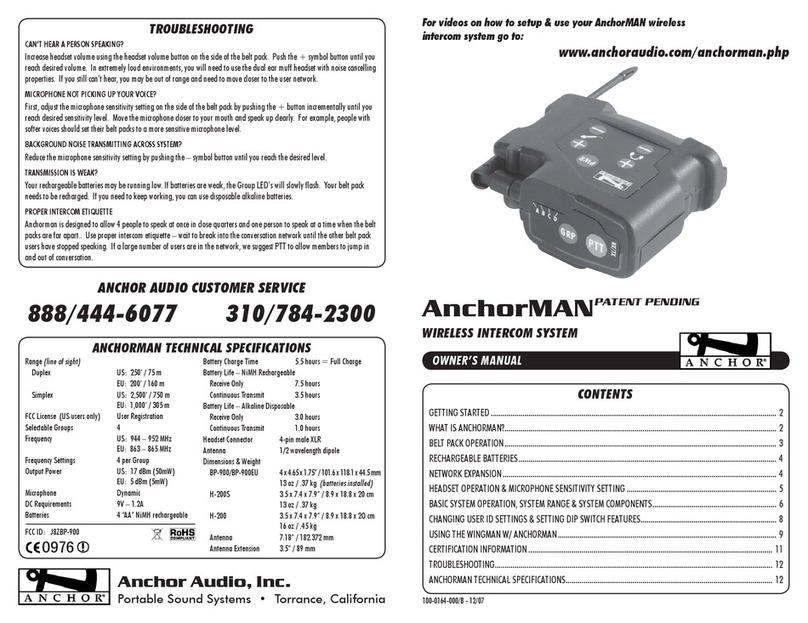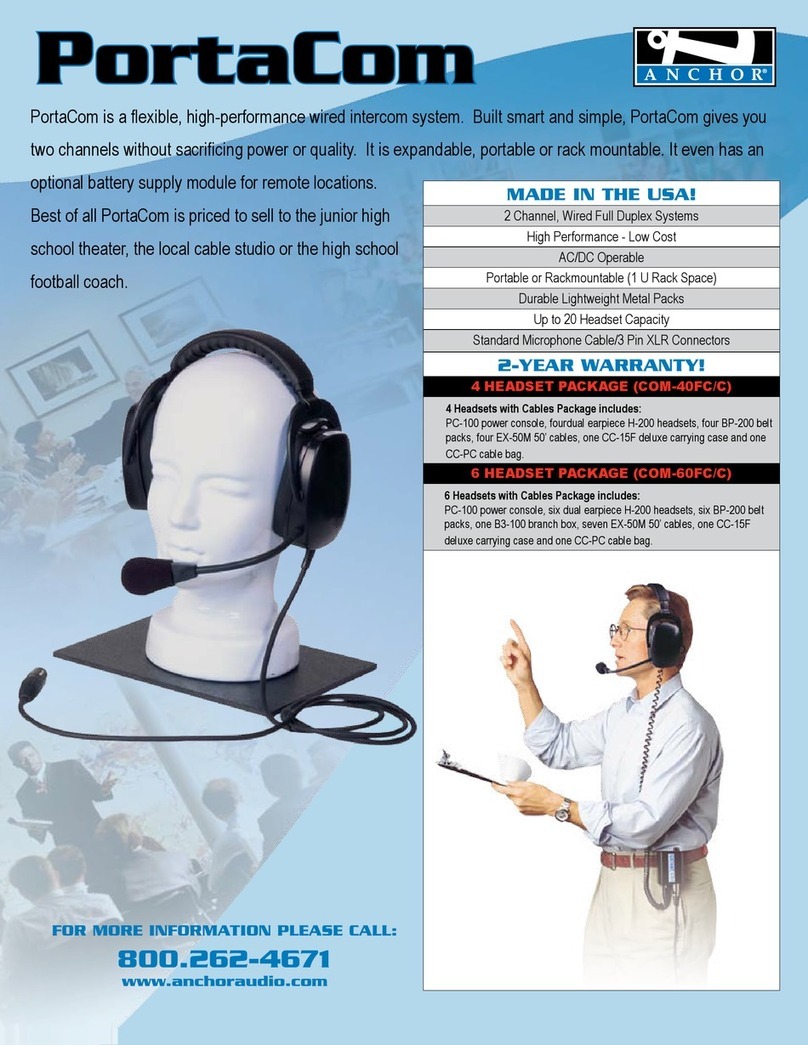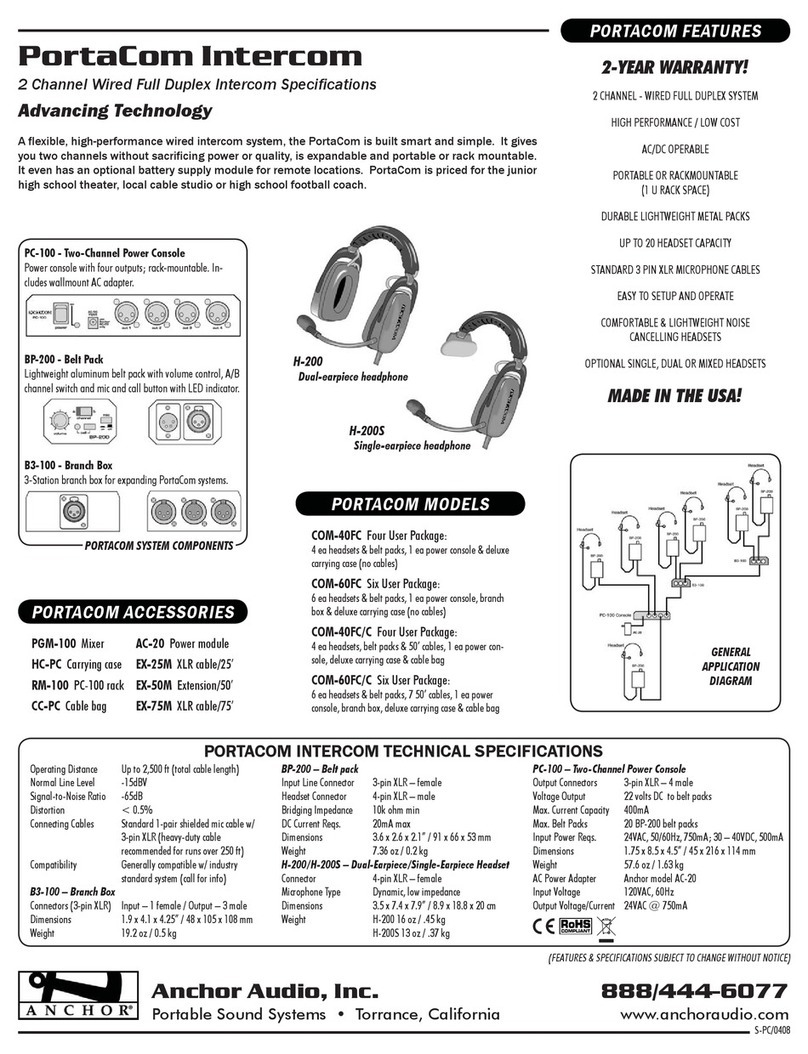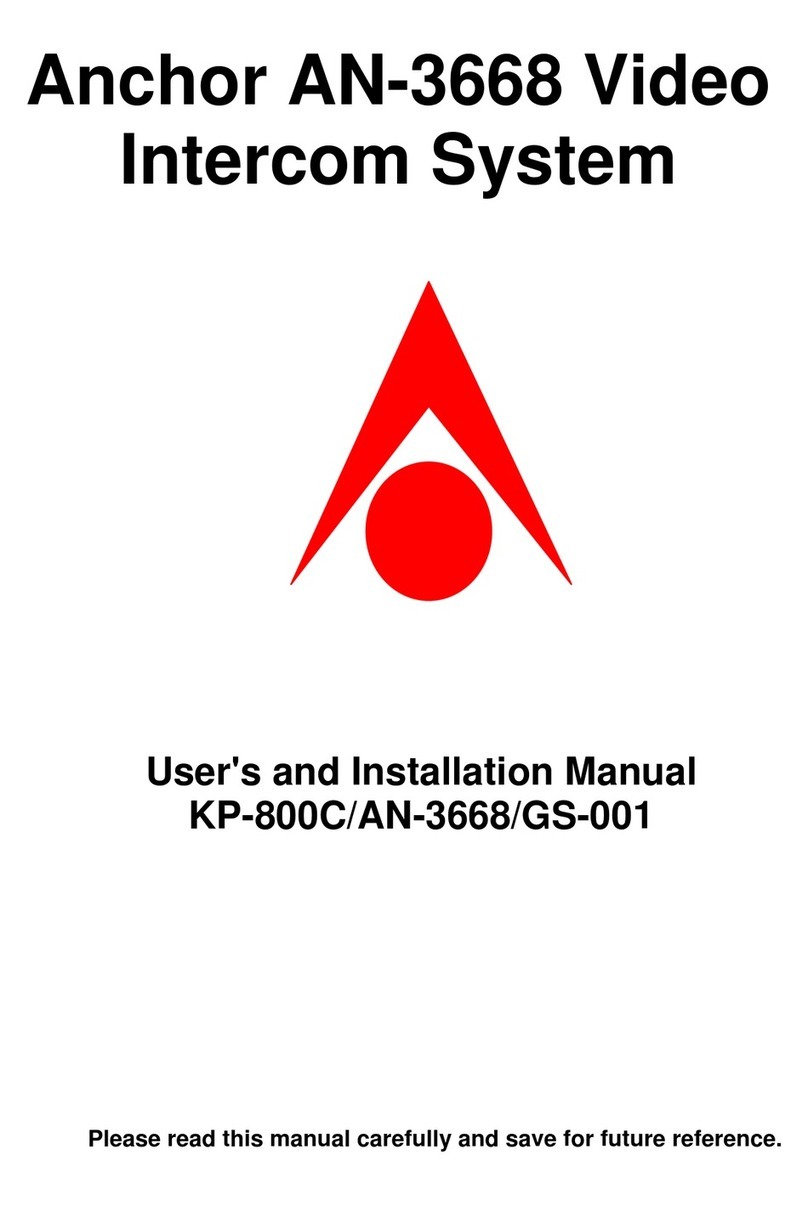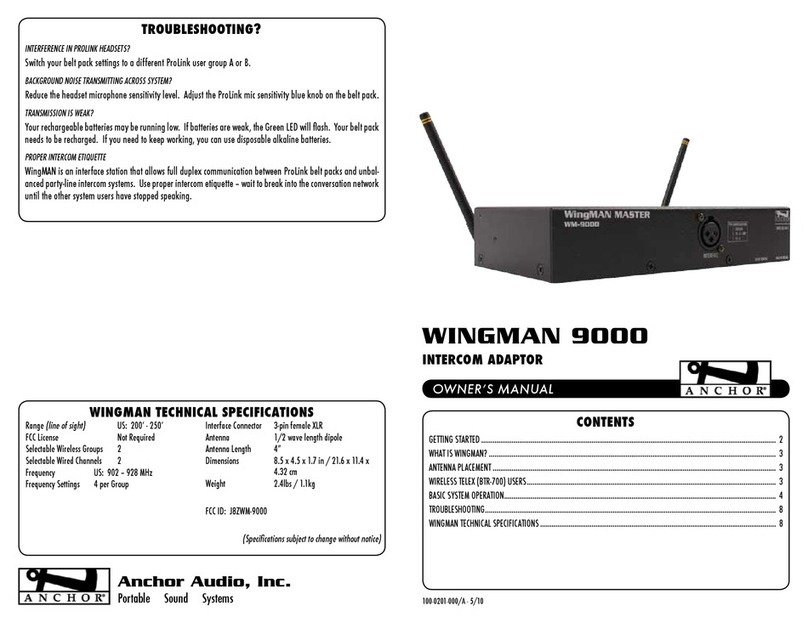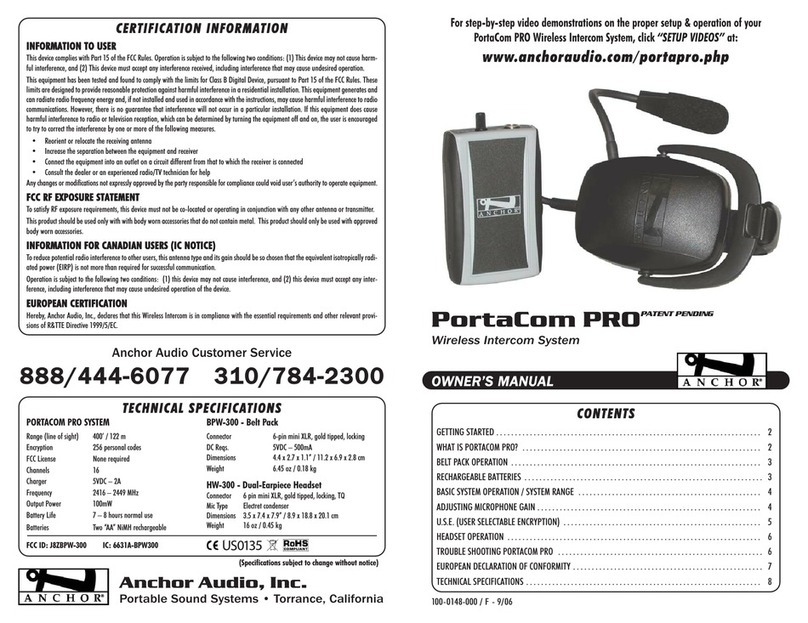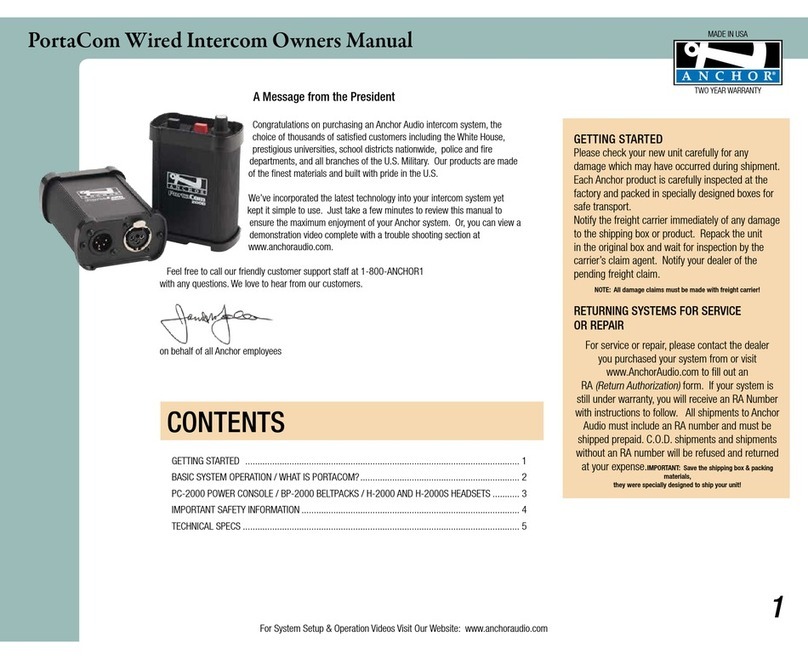The ergonomically designed BP-900 AnchorMAN belt pack features an XLR headset jack, heavy duty antenna, headset volume
control, microphone sensitivity control, group selection, PTT
(push to talk)
and transmission indicator LED. The belt pack is pow-
ered by 4
(included)
“AA” NiMH rechargeable batteries.
To create a belt pack group, each member must set their
Group Selector to the same letter – A, B, C or D. Press the
GRP Button to change groups. The LED will light indicating
the selected Group
(A, B, C, D)
.
The director assigns photography to Group A, sound to
Group B and lighting to Group C. He can then be a part
of any group by simply pressing the Group Selector But-
ton to the desired group.
Due to the unique environmental conditions found at some locations
(Example: Next to a radio station transmission tower.)
you
may nd that one of the four Group settings experiences disruptive interference. Simply discontinue use of the effected Group
and try the three remaining Groups to identify the clearest signal. For best results try the Group farthest from the affected Group
rst
(If Group A has interference try Group D)
.
Due to the use of other wireless devices in your area, it may be possible for one or more channels within a frequency group to
experience RF
(radio frequency)
interference. It may be necessary to audition all frequency groups prior to selecting the one
that performs best for your application.
Push to Talk Mode
(PTT)
– Default mode when the PWR button is pushed. Press
PTT button to speak to Group, release PTT button to listen.
Active Mode – Hands free voice activated operation (VOX) requires adjusting the
Microphone Sensitivity level. Upon power up, belt packs default to low requiring
PTT operation. Push the “+” button repeatedly to increase mic sensitivity until
transmission is activated by the sound of your voice.
AnchorMAN belt packs include 4 “AA” NiMH rechargeable batteries and AC Gang Charger. Fully charged NiMH batteries yield
approximately 7 hours of normal use. Alkaline “AA” batteries can be used but battery life will decrease by half. Connecting the
AC charger to a belt pack with alkaline batteries installed could seriously damage the system.
Some users are required
(for emergency preparedness, etc.)
to leave their AnchorMAN units plugged into the charger at all times.
For these applications we recommend replacing the rechargeable batteries every 12 months.
The AnchorMAN is designed to work with dynamic microphone elements.
(Shields can be connected to chassis ground pin.)
Headset pin conguration: 1 = Mic (–), 2 = Mic (+), 3 = Headphone (–), 4= Headphone (+)
You can substitute “AA” alkaline batteries for the rechargeable batteries. However, connecting the battery charger to the belt
pack when alkaline batteries are installed could seriously damage your belt pack.
No. AnchorMAN uses a proprietary design and software exclusive to the product.
No. AnchorMAN is not penetrated by common scanners.
The H-2000 and H-2000S headsets are covered by a two-year warranty. Follow the instructions in the Getting Started section
on page 2 for a Return Authorization. AnchorMAN headsets are sold separately if a replacement is needed.
Yes. It’s designed to accommodate an unlimited number of listeners. However, the maximum number of people that can
speak at once in one group is limited to four. Belt packs that are set to the same USER ID
(DIP 1 and 2)
and GROUP will in-
terfere if they transmit at the same time. However, if two users are not expected to speak at the same time, they can share a
USER ID.
1. Slide battery compartment door to remove
2. Install 4 “AA“ NiMH rechargeable batteries
3. Replace battery compartment door
1. Connect Gang Charger
(included)
into Charging Port on bottom of
belt packs
2. Plug Gang Charger into AC outlet
(Charging Port LED on = battery charging)
3. Charge belt pack for 5 hours
(Charging Port LED off = battery fully charged)
